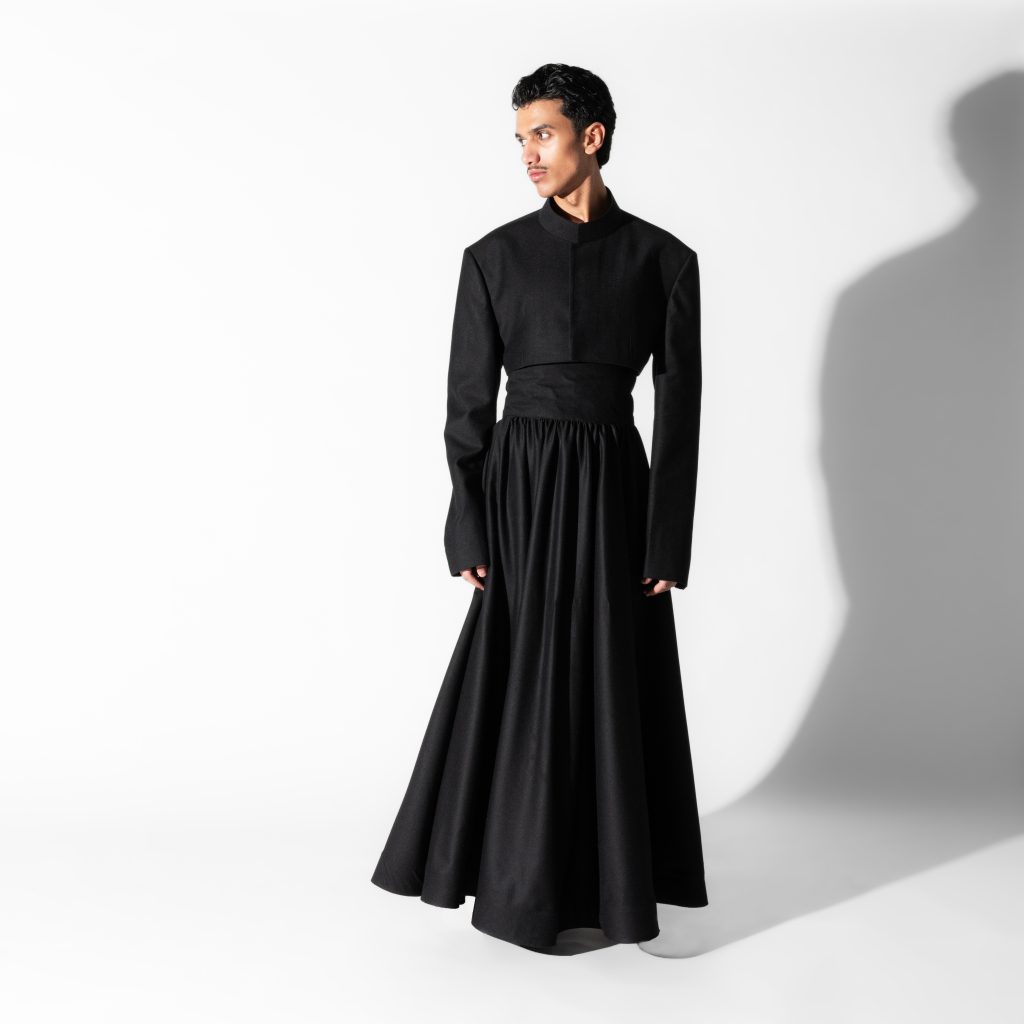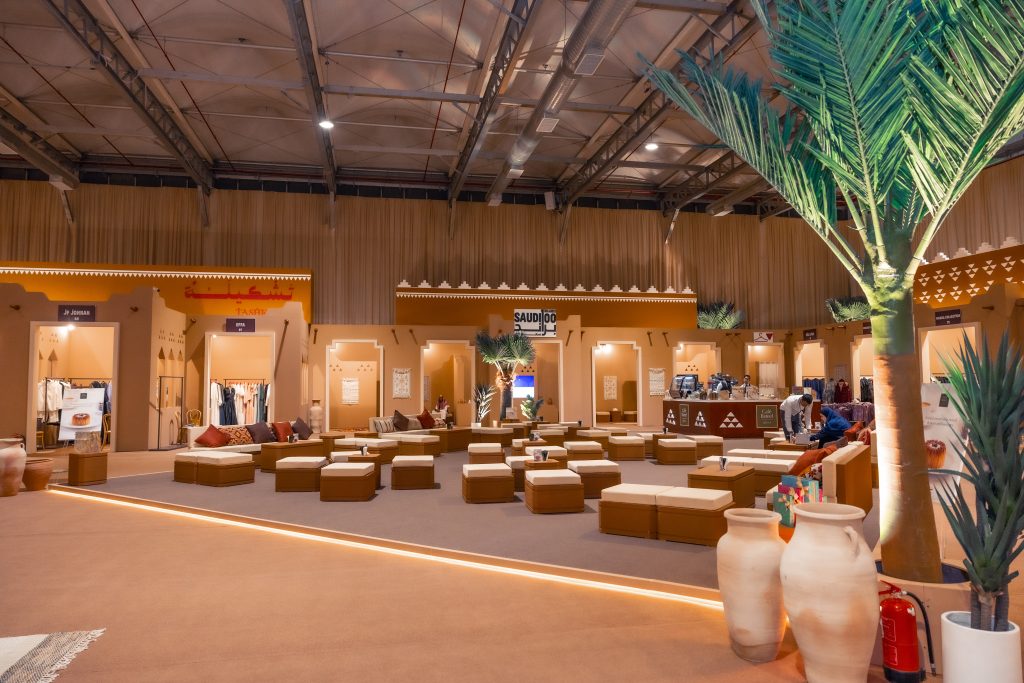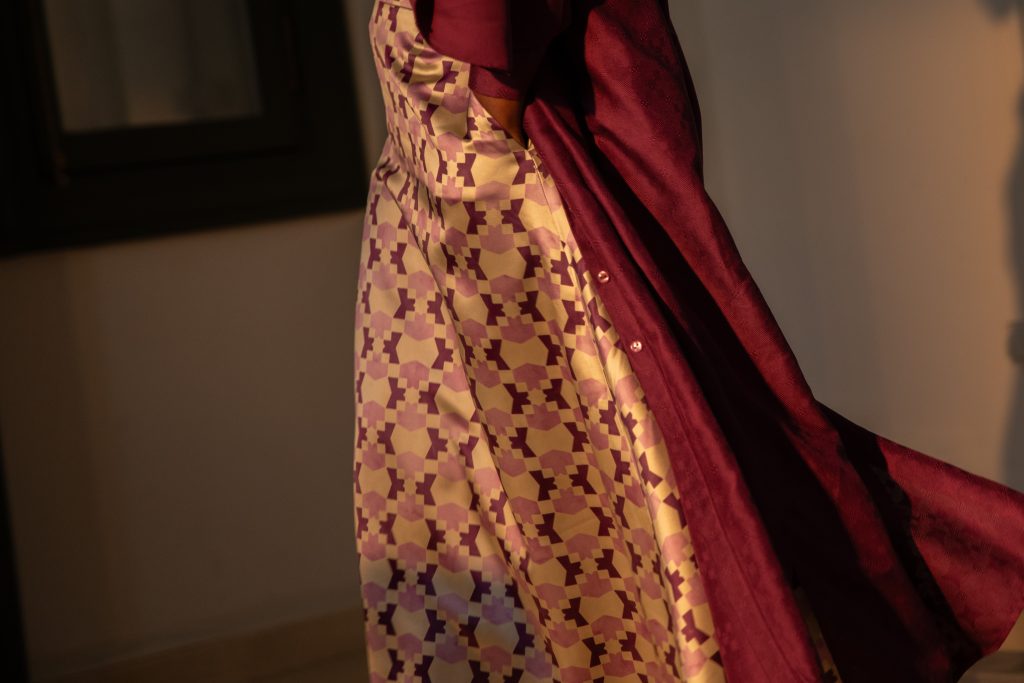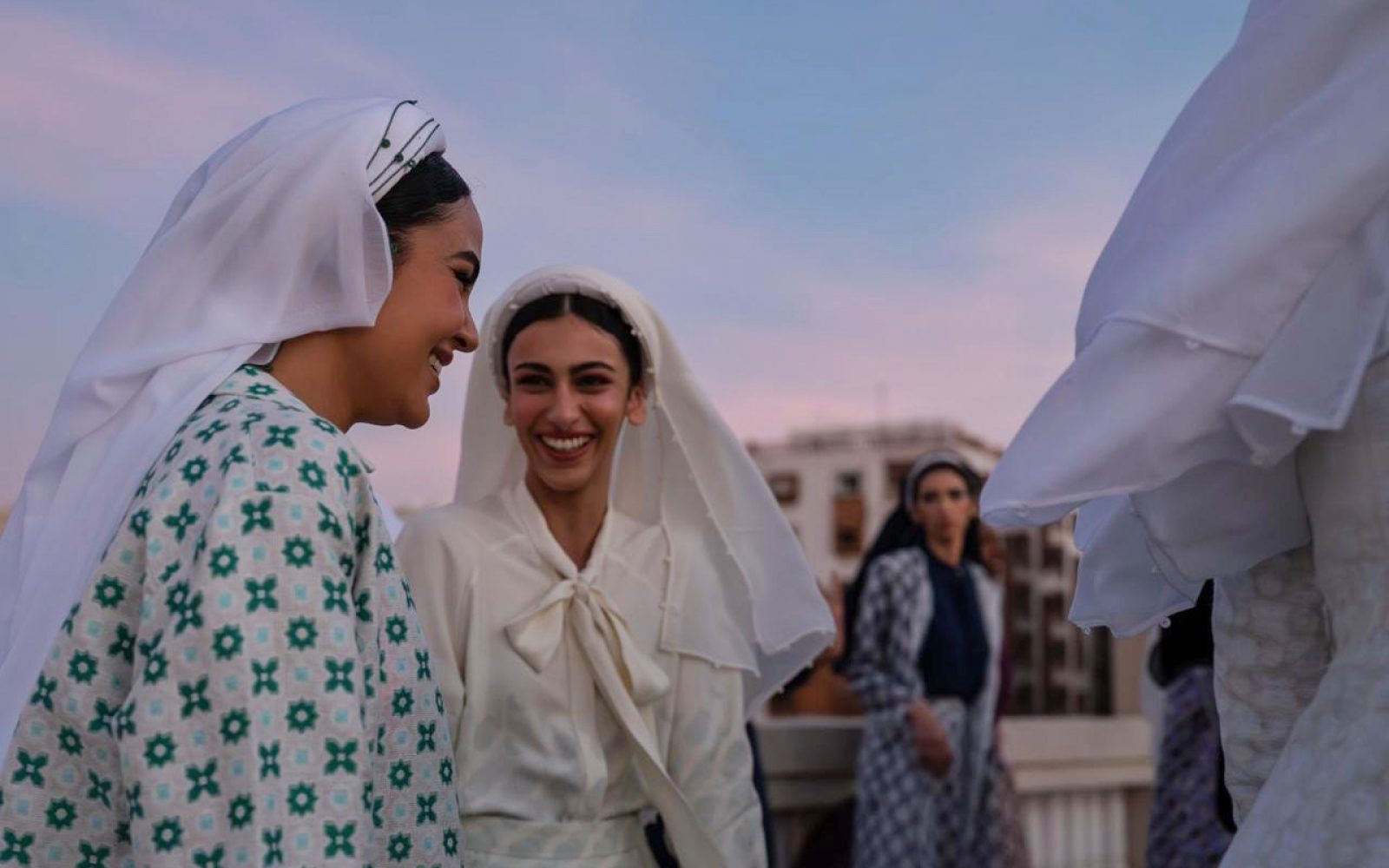Saudi designers are reaching new heights – and they’re taking their heritage with them, discovers MOJEH at last month’s Saudi 100 Brands Tashkeela exhibition in Riyadh
Picture this: the top half of a thobe, worn cropped, on both men and women. Amid stalls showcasing sequinned kaftans and intricately-draped gowns, the comparatively minimalist, crisp white shirts with high-neck collars and falling bell sleeves at KML by Ahmed Hassan have garnered an attentive crowd as he discusses the cultural inspirations underlying his pieces. Ahmed is one of 160 designers showcasing at Tashkeela, the Ramadan exhibition by Saudi 100 Brands – a mentorship programme that develops and supports designers in the Kingdom.
Ahmed launched his label a year ago with a capsule collection inspired by Sufi wear – relaxed, high-waisted garments and cropped tops in neutral tones. “Everything we do comes from the reservoir of culture – we’ve been westernised for too long, and now’s the time to go back to our tradition and get inspired by our own world,” Ahmed tells MOJEH. His designs celebrate authenticity and versatility, and are also genderless – a daring divergence in a country where fashion has clearly differentiated between men and women in contemporary times.

KML by Ahmed Hassan features genderless clothing including cropped tops and sweeping skirts
Reham Nassier is another Saudi designer re-imagining white blouses through a cultural lens. Exclusively for Ramadan, she created a collection of shirts featuring neckline-to-hemline columns of gold embroidery inspired by the southern Asir region of the Kingdom. Reham studied fashion at Esmod in Paris, and showcased her designs with Saudi 100 at a tradeshow during Milan Fashion Week in September. “I hope to go international, while also producing for the Saudi woman and celebrating female empowerment in our country,” she tells MOJEH.
Women have undergone significant changes over the past decade, especially with the nation’s pledge to increase the number of women in the workforce by 30% as part of its Saudi Vision 2030 initiative. As a result, the traditional abaya, which is no longer a legal requirement but still holds cultural relevance, has been upgraded to suit the needs of the modern woman. House of Nada is one brand that has answered the demand for more professional abayas with a range of tailored, blazer-inspired designs. “Saudi is changing, and a lot of my clients are female CEOs or work at the managerial level, and need modest suits for their offices for when they travel,” says designer Nada Moahmed. Sleek and practical, her blazer-abaya hybrids come in solid, pinstriped, double-breasted and vintage-inspired styles with minimal button or crystal embellishments.

Saudi 100 serves as a platform to highlight the talents of both up-and-coming and established designers
“Saudi brands are always inspired by their past and their heritage, but they’re also taking it to the future in a new way,” says Burak Cakmak, CEO of the Saudi Fashion Commission. Through the organisation’s Saudi 100 Brands project, 100 designers are selected each year and are mentored with advice on design, manufacturing, supply chain, and business. “We are very keen to grow the sector and that requires working first and foremost, with local brands,” Burak tells MOJEH. Some of the designers are given international exposure through collaborations with Paris Fashion Week and Milan Fashion Week, as well as workshop and certification opportunities through these cities’ prestigious fashion institutes.
Such was the case with Noura, the designer behind Noonaeen, who travelled to Paris in August and received an Executive Certificate in Fashion Business from Institut Francais de la Mode. With an eye for merging mainstream trends with cultural modesty parameters, she designed three-piece linen suit sets featuring trousers, vests and matching abayas. At Tashkeela, the spotlight was on her latest collection of pastel-toned, cape-sleeved cropped tops emblazoned with silver beaded palm trees, paired with matching high-waisted tiered skirts. “I wanted to have a modern silhouette and colour palette with embroidery that’s more traditional and represents Saudi,” she explains.
For some designers, the inspiration is rooted in personal memories of home. Alaa Hashim, who lives between Jeddah and New York, designed kitschy heart-shaped handbags embellished with iridescent drop crystals. “They’re inspired by my grandmother’s living room; she had these heart-shaped cushions, and these chandeliers that we’d watch being dusted,” she recalls. Chandeliers also inspired a range of beaded crystal bags by Alaa Hashim Studios, rooted in her first trip to Al Ulla, where she saw a woman making these by hand in the market. She connected with her and commissioned custom pieces. “It takes her five days to finish one, and she had to hire people to help fulfil the order,” says Alaa.

Makram Marzuki infuses geometry inspired by Arabian architecture into its designs
Makram Marzuki meanwhile, was inspired by the distinctive rawashin window designs in Jeddah’s historic Al-Balad district, and collaborated with artist Ahmad Angawi to bring them to life in his debut collection. “The core of the brand is geometry,” says Makram. “Every season, we’ll choose a different geometry design related to a different city – the next one will be Riyadh.” Makram studied at Parsons in New York, and just launched his label last month. “Saudi 100 is raising the profile of our culture – it’s up to us to be inspired and to create, but then they really help us expand our culture abroad,” he says.
Replete with a rich tapestry of heritage, the Kingdom is witnessing a fashion rebirth of sorts, with a plethora of personal stories and influences driving designers. And while Milan and Paris may be dream destinations for many brands, for some, like KML’s Ahmed, transforming the retail landscape at home is a more pressing priority. “Honestly, I want to show the people of this region what relevant fashion is, before I show the world,” he says. “That is my main aim.” Discover more designers here
Read Next: Meet The Saudi Athletes Shattering Stereotypes One Medal At A Time
- Words by Hafsa Lodi





